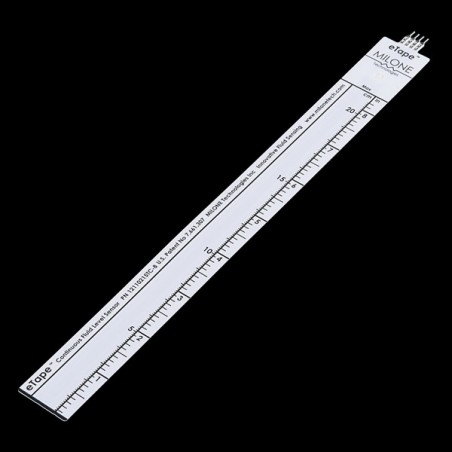








Este Sensor de nível de líquido no formato de eTape com 25,7cm é uma excelente forma de medir o nível de um líquido. Ele tem uma saída resistiva que varia com o nível do fluído.
DESCRIÇÃO EM PORTUGUÊS BREVEMENTE DISPONÍVEL
Se tiver alguma dúvida neste ou outro produto não hesite em contactar-nos
The eTape Liquid Level Sensor from Milone Technologies is a great way to measure the level of a liquid. It has a resistive output that varies with the level of the fluid. It does away with clunky mechanical floats, and easily interfaces with electronic control systems. The sensor's envelope is compressed by the hydrostatic pressure of the fluid in which it is immersed. This results in a change in resistance that corresponds to the distance from the top of the sensor to the surface of the fluid. The sensor's resistive output is inversely proportional to the height of the liquid: the lower the liquid level, the higher the output resistance; the higher the liquid level, the lower the output resistance.
Note: These sensors used to have only three pins but they're made with four now. The sensor works the same way as before. See the datasheet for details.
Documents:



Este Sensor de nível de líquido no formato de eTape com 25,7cm é uma excelente forma de medir o nível de um líquido. Ele tem uma saída resistiva que varia com o nível do fluído.
